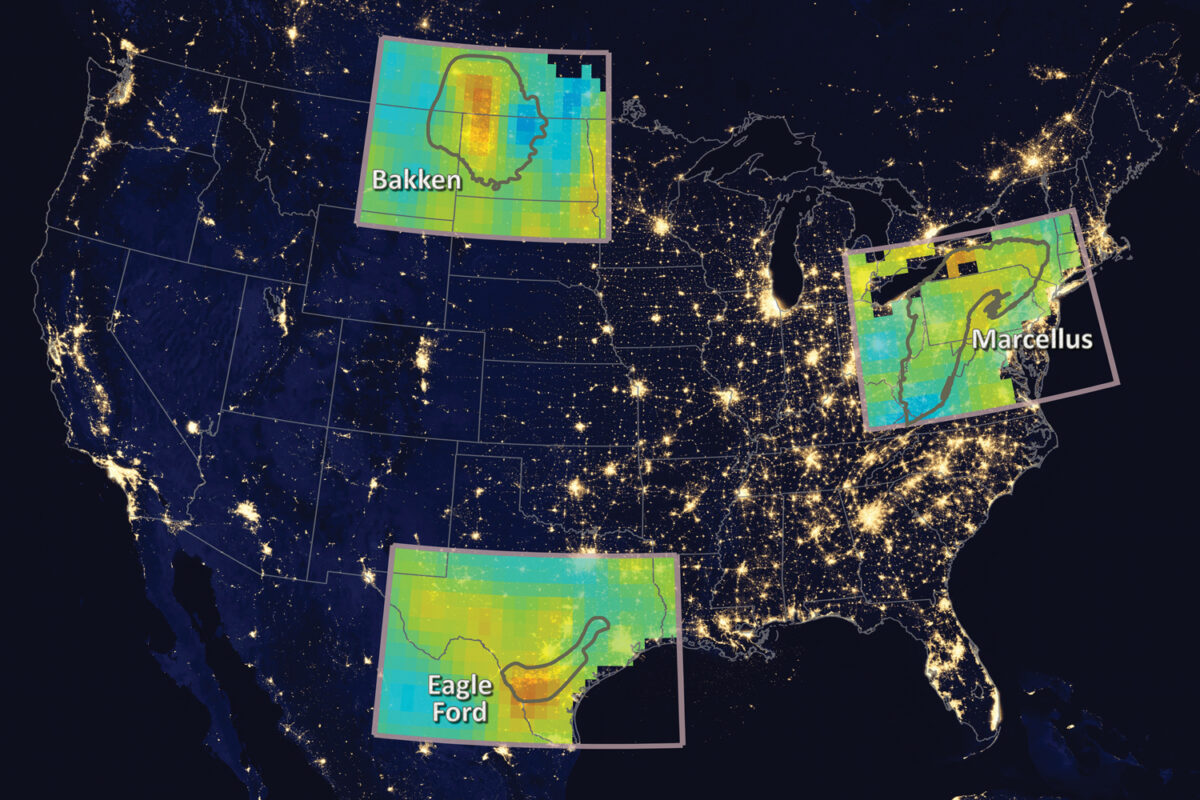A few years ago, while poring over satellite images of the Earth at night, scientists spotted the bright glow of natural gas flares burning in the oil and gas fields that have fueled America’s recent energy boom. Now they have spotted something else from space: large plumes of fugitive methane gas liberated from these formations by unconventional extraction methods like horizontal drilling and hydraulic fracturing.
Schneising et al. studied measurements of atmospheric methane concentrations collected by the satellite-borne Scanning Imaging Absorption Spectrometer for Atmospheric Chartography (SCIAMACHY) to look for anomalies in the spatial distribution of this potent greenhouse gas. Their analysis revealed localized methane hot spots near North Dakota’s Bakken formation and the Eagle Ford formation in Texas, which appeared after oil and gas production ramped up starting in 2009.
Using a simple model to account for the effects of atmospheric transport, the authors calculated the methane emissions released from each formation over time. Their results reveal that leaks increased by nearly 990,000 and 530,000 tons of methane per year for the Bakken and Eagle Ford fields, respectively, from 2006 to 2008 and 2009 to 2011. As a proportion of the total oil and gas produced at these fields, this represents a leakage rate of about 10% for both fields, in good agreement with previous estimates for several other leaky formations around the United States.
Because methane traps more heat than carbon dioxide on a per molecule basis, this leakage more than offsets any short-term climate benefits of converting from coal to natural gas or oil for energy production, the authors write. However, they note that some oil and gas fields do not appear to have similarly high methane emissions, suggesting that such leaks could be stemmed by improved drilling techniques and well designs. (Earth’s Future, doi:10.1002/2014EF000265, 2014)
—Julia Rosen, Writer
© 2014. American Geophysical Union. All rights reserved.
© 2014. American Geophysical Union. All rights reserved.

